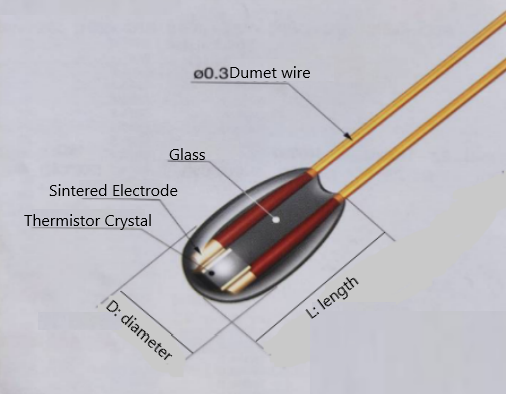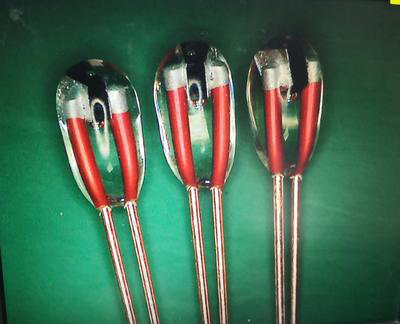NTC thermistor
is a high-precision detection resistor that adopts special semiconductor ceramics with a negative temperature coefficient. Also, it is a temperature-dependent resistor, the resistance will rise or fall with the change of temperature. NTC thermistors can not only detect the temperature, but also protect the circuit’s safety. In this article, we will help steer you in the right direction and tell you how to test the NTC thermistor.
Test Method of NTC Thermistor
We can get an effective result by doing the detection with various temperatures. Firstly, you need to adjust the product to the first gear and guarantee that the temperature of the room is around 25 degrees. And then use the ohm of the multimeter to measure "1", "2" on both ends, its reading should be the nominal resistance value of the potentiometer.
Relatively speaking, the resistance value and It is quite normal for the actual resistance value to have a difference between two ohms. But if the pointer of the multimeter is not moving or the resistance value differs a lot, indicate that the potentiometer has been damaged.
If the temperature is normal, then you can carry out the heating test. Using a heat source like soldering iron to get close to the thermistor, and monitor if the resistance values will rise with the increase of the temperature. If the resistance value remains the same, illustrate its performance becomes bad, can't continue to use.
Warm reminder: The heat source can not be too close to the thermistor to protect it from burning. Also when choosing any test method, we must pay attention to the body temperature, which is higher than the ambient temperature.
When holding the thermistor with your hand, observe whether there is any resistance reading Variety. At the same time, check the temperature of this thermistor during each test, and make sure to measure it after it drops to room temperature.
Take our product - Glass encapsulated NTC thermistor as an example

is temperature-dependent resistor which employ semiconductor ceramics. The lead wire adopts the dumax wire and the semiconductor ceramics are made of glass.
The glass head NTC parameters are monitored through high-temperature sintering and high-temperature oil tanks, so as to ensure a highly sensitive and highly reliable thermistor. Also, it features stable signal transmission, high-temperature resistance, high precision, and high range, etc.
Parameter of CIG NTC:
| D □ GRT □-□ K □ □- □ □ | |
| 1 2 3 4 5 6 7 8 9 | |
| 1 | BRAND: D: DX S:SP |
| 2 | Glass head OD: 1: Φ2.0 mm 2:Φ 1.60mm 3: Φ 1.35mm 4: Φ 1.25mm 5:Φ 0.80mm |
| 3 | GRT: glass encapsulated ntc |
| 4 | 51: single end sealed 58: diode type |
| 5 | Resistance value at 25℃ KΩ。 |
| 6 | F: ±1% G:±2% H:±3% J:±5% |
| 7 | B–Value |
| 8 | B1:B25/50 B2:B25/85 B3:B0/100 B4:B0/50 B5:B50/85 B6:B100/200 |
| 9 | G:gold electrode S:silver electrode |
Characteristics of Glass encapsulated NTC:
1.glass insulate, high reliable
2.this type NTC was produced by full automatic production line, characteristics is stable and uniformity is good.
MODEL:
working temperature:-40℃~300℃
Thermal time constant :10 seconds(in air)
Dissipation constant:1.3mw/℃(1.1-1.6mw/℃)
Conclusion
As a high-precision detection resistor, the NTC thermistor is used in a wide range of different industries, and presents a safer and more stable use effect. Purchasing it from professional manufacturers has better advantages, such as faster response speed to the temperature.
HORLE is engaged in producing and selling CIG NTC, temperature sensors and parts, also we provide the best quality product and first rate service to our customers. If you want more details about our product, don’t hesitate to contact us!







